I first heard of Linden trees (Tilia spp, Basswood, Lime) through my exploration of folk herbalism and discovering some of the American herbalists such as Susun Weed and Robin Rose Bennett and their inspiring teachings around the benefits of drinking nourishing infusions of nettles, oatstraw, red clover and linden blossoms and more. Never having met a linden tree, I was intrigued by the description of the sublime fragrance of the blooms. How foolish I felt when I discovered that for all these years, and in every December that we have lived here in Hastings, there have been many beautiful linden trees blooming in our nearby park and I had missed them for so long. Never again! The trees in Cornwall Park are mainly Tilia Europaea and hold an exquisite elegance and distinctive grace no matter the season.
I have noticed that the lindens are amongst the last of the trees to leaf up in spring.
The brand new tender leaves are edible and buttery and delightful in salads.

Here in Aotearoa we may know trees by name, but seldom for their significance, symbolism or healing properties. In Slavic countries, linden trees are regarded as sacred or Holy trees and revered throughout Europe too, often symbolising peace, truth and justice. I have barely met a local who knows these trees at all, yet here they are scattered throughout all our district parks almost entirely untreasured, unvisited and taken for granted.
I can see why it's been observed that "The linden tree forms a vertical axis which organises the relationship between the earth and the heavens. It represents both The Tree of Life and the point of contact between heaven and earth."

As I once again research and consider the history and medicinal properties of the Tilia spp I am overwhelmed by the descriptions, metaphors and stories that surround these remarkable trees.
"This tree, whose bark was used to weave textiles and make ropes, is by extension a 'Tree of Ties that Bind', linking together communities and individuals. It is known as The King of Trees."
It took me awhile to realise why I just wasn't connected to many of our own ancestral and societal traditions. Because, of course, they almost all belong to the "other" hemisphere and I am all about authenticity- straight up meaningful, or not at all. I don't want to live upside down or in someone else's fantasy. So I began to notice what was happening in our landscape at Christmas time. It was easy to see the glorious bright ruby and carmine blooms of the Pohutukawa trees, and even better when I learnt how to harvest the flowers and make a divine summer syrup from them. The fresh stone fruits and berries are lovely and a great many people enjoy cherries and Christmas lilies, but no one seems to know about the linden trees.

And if only we did, imagine how much calmer the "Silly Season" could be.
"This tree that wishes us well has lived with mankind since time immemorial."
In 1901 our house wasn't even built, but this Memorial fountain was erected in celebration of King George the V's coronation, in the park just around the corner.
I can see the chestnut trees and the conifer on the right but the linden's I suspect were planted later around the early 1920s, like so many others around New Zealand, in memory of those who lost their lives during WW1. The two elegant trees in the background are Tilia Europeas, as are the seven others that line the main walkway through the centre of the park, including one Silver Linden & another four extras.
These trees are particularly distinctive in autumn and winter,
with an elegant form and presence.
The more I visit with the lindens and with the various trees, the more I notice that there are many varieties and styles and flower forms and fragrances. These relatively young linden trees are found along the path in to Frimley Park coming in from the Lyndhurst road entrance.
These particular trees are just lovely and flower from early to mid December.
There are some especially old linden trees in Frimley Park and quite a number of newly planted ones which is really encouraging. There is one large Silver Linden probably 'Sterling' in the middle near the playground. A variety that we became aware of this December is a huge old tree that I am calling 'Curtains' for now as the leaves are quite small, as are the starry fluffy flowers and they flower at the end of December along with the silver lindens. There is a huge old specimen here, two very small newly planted trees in the avenue and then another huge one in Ebbett Park.
'Curtains'
The branches sweep down in curtains- the flowers are unusual as they sit atop the leaves rather than hanging underneath.
There are quite a number of other varieties at Frimley too. Even their seeds are distinctive. Some tiny, others large. Some sparse and others prolific. The mature seeds can be dried, toasted & ground to a powder and used in baking. They impart a chocolatey flavour.
When I first visited in early December this little 'Curtains' tree was just developing it's foliage.
Later in December it was still growing and producing new buds with vigour.
Another well established tree in the middle of Frimley Park.
Most of December this year has been either raining or overcast so it has been difficult to get good photos of the trees, seeing as they are green.
Here's the Silver Linden in the background.
The first time I met a linden tree was when I discovered the Tilia Europaea in Waikoko Gardens where we have our local Farmers' Market. It's still there, right beside the pond.
The scent of that tree in the summer heat was truly intoxicating; the hum of a myriad of bees, mesmerising.
It was this tree under which Clyde Potter had his organic vege stall for a good many years.
Oh how I loved Clyde and his vegetables.
We lost him last year, just after his retirement, in a dreadful electric car incident.
Here's Clyde's stall under the Linden.
Developing a relationship with your tree allies is best done slowly, mindfully and with all the senses engaged.
One year I came across this lovely linden in the middle of a paddock in our A & P showgrounds.
We returned together to sit with the tree, inale the heady scent of the sweet blossoms and experience the extraordinary activity of a million intoxicated bees.

You cannot pick linden blooms quickly or you're likely to pick a bee.
"Linden blossoms are anxiolytic, they are reputed to attract joy and keep melancholy away.
The linden tree is also called the
Tree of Joy".
Yet another Linden in the Showgrounds, sheep trimmed and plump.
One year we came across a street of blooming linden trees in Napier- right outside a supermarket.
People parking underneath them entirely unaware of that privilege.

When visiting Greytown last autumn we stumbled upon a double row of perhaps a hundred linden trees running alongside the Soldiers' Memorial Park. They were planted in commemoration of the fallen soldiers of WW1
The same thing was clearly repeated in many small towns around New Zealand at that time, as there is also a street in Otane- Miller street that is also lined with a variety of linden trees- around 39 of them as I recall.
Now 100 years old.

It was good to see a few replacements had been installed when we visited this last December

There's also a number of trees out the back of the school in Otane,

A collection of younger trees reside here in Windsor park in Hastings. There are a number of varieties of Tilia here- some flowering early in December & others still blooming as the New Year approaches.
Our favourite picking trees are in this park. We had a great many opportunities to chat with passer's by this last season, none of whom had heard of, nor noticed the trees before.
Most of them went home with a handful of flowers and intended to try the them as tea, for themselves.
The easiest and safest way to harvest linden flowers and bracts (the bracts are part of the medicine) is to stand inside the tree looking up and out. Much less likely to disturb the bees.
The heart shaped leaves are beautiful and come in various sizes, although not fragrant themselves.
A basket full of linden blooms will fill the whole house with the sweet scent of peace.
.jpeg)
But best of all is the daily fresh blossom infusions that we drink through the month of December.
A large handful of blossoms & bracts, a large tablespoon of honey, a rounded dessertspoon of dried hibiscus sabdariffa flowers- optional, lemon is also a good addition- in to a litre agee jar, pour over boiling water, cap and and leave to cool for at least 4 hours or overnight.

The gorgeous ruby infusion can be strained & enjoyed at room temperature, chilled or added to kombucha. It's actually a blessing really coming to learn about the gifts and benefits of linden with almost no outside influence or direction, since everything I have learnt comes from firsthand experience and interaction with the trees themselves, which includes an intimacy absorbed through all the senses. Having learnt folk herbalism this way, I am constantly puzzled by the common approach of herbalism of online programmes that forge little relationship with the plants themselves. Obviously I have read some sound teaching from herbalists like Susun Weed, but the rest comes through childlike interactivity, personal observation and simple getting to know the plant year after year. When people rattle off oh yes you use the flowers & leaves I think- well clearly you've never tasted tea made with linden leaves. The only time I did that was the time I wondered why my infusion was bitter? Yes, the tender brand new leaves are delightful in salads and pesto however, they are not a useful inclusion in teas or infusions. You're not going to get a lot of benefit from three little flowers in a tea pot either as I just read somewhere.
I have been finding a small glass of infusion before bed with a little hop tincture or chamomile really helpful in supporting better sleep. I have a long journey ahead of me to reset my sleep quality but it's so lovely to know that linden will be a friend on that journey.
Every brew will come out a little differently.
Linden is a relaxing nervine which would explain its ability to help support sleep and to help us to relax or process grief. It's also a wonderful anti-inflammatory herb which helps to promote heart health. It is a vasodilator which may help to manage or modulate blood pressure. How lovely that linden is such a gentle medicine that it can be safely taken by young and old alike. Linden tea or infusion can be taken warm or cold and is so delicious, especially with a little honey, which makes it ideal for use in it's role as a diaphoretic- helping with sweating out colds and 'flu and even easing coughs. Although our go to on that count is almost always
violet honey syrup.
There are no contraindications to the use of linden or violet, for that matter.
So, by forming a relationship with a tree that can help to improve heart health, support nervous system health, improve sleep quality and to be of assistance when resolving upper respiratory viral infections and inflammation in the body, surely we can only be grateful for such a wonderful opportunity of commune.
I just love Robin Rose Bennett's summary of the joy of linden blossoms.
The transition from flowering to seeding is almost imperceptible. I've been fooled many a time thinking that there are still flowers when in actual fact
the tree had quietly and steadily gone to seed. Both flower and seed remain attached to the same bract and for a good long time the colour doesn't change- still holding the lemony hue that we associate with the flowering period right up until the seeds begin to dry and become a biscuity colour.
Seeds and bracts just above, flowers and bracts below.
The last of the Tilia family to flower are the silver lindens. The flowers are larger and have quite a different scent- strong green jasmine notes, not so much the mellow honeyed sweetness of the earlier blooms.
There are number of significant silver lindens around Hastings- both Tilia Tomentosa and perhaps Petiolaris or Sterling- the weeping form.
This particular tree goes almost entirely unnoticed in the green space opposite the Hastings District Council building. Mind you it flowers when everyone is on holiday at Christmas time. A perfect time for us to visit.
As it blooms it assumes a flaunting stance, revealing it's silver underbelly for all the world to see- well if they were bothering to pass by.


This particular tree was planted by the then Mayor of Hastings JJ O'Connor and his Chinese mayoral counterpart Liang Shan in 1991 as a sister city thing with Guilin.
This is a great example of how the flower buds mimic the seeds- both hang from the same bract as I mentioned before.

The silver linden flowers are larger, fleshier and more waxy than the early blooms of Europaea and so forth.
The bracts are greener too.


The leaves are often really large.
A large agee jar makes enough infusion to fill two flip top Grolsch bottles.
Give them a day or two and they'll become fizzy and taste delicious all by themselves!

Right on Christmas and through until New Year we visited these Silver Lindens in Ebbett Park.
I suspect that this may be the pendulous Linden Sterling.
Over towards the playground there is an enormous Silver Linden
and then further along a very large "Curtains" tree.

the flowers being smaller, late flowering & featured on the outside of the tree.
Quite fluffy little things. Their scent is quite soft and gentle compared to the others.
There are a number of protected trees on the corner of Caroline road and Frederick street, one of them being a very old Europaea.

Along Frederick street further heading towards Karamu road there is a very lovely Silver Linden in a private garden.
In Bill Mathewson Park there are three Europaeas and this large silver linden.
It was aggressively trimmed up last year and the tree has responded by making a protective "collar" of suckers around it's trunk.

At the back of the little building there there's another Silver Linden that struggles to produce many flowers.
Just after Christmas I went for a walk along Karamu road as you head out towards Waipatu and discovered that the walk way is much longer than you might think. It is also lined with predominantly silver lindens.
At the end of the walk way, if you look across the road you'll see Clyde's linden tree.
When I got home and uploaded these photos I realised it was the 1st of January and the first anniversary of Clyde's passing. And right here are the main gates of the A & P showgrounds, where there are even more lindens.
I think perhaps there are 9/10 of them lining William Nelson Drive. This is where our "Nelson" street also came from- William Nelson who lived here on this property at "Waikoko Gardens" and whom was known as "The Father of Hawke's Bay".
William with his dog Tiddles in 1931. Photo borrowed from
here where you can also read a short biography if you're interested.

The remnants of the great wisteria that people often gather around on Sundays during the weekly Farmers' Market.
Sublimely scented- edible flowers.

In late summer the Tilia seeds mature and can be collected dried, roasted
and ground in to a fine powder in a spice grinder. Once sieved to remove any hard bits, it can then be added in to baking- imparting a distinctly chocolatey flavour.

I added some in the quantities you would cocoa, in to this simple shortbread type biscuit that I made one autumn with prepared evergreen oak, acorn flour. There's useful stuff about the acorns and which ones to use just
here in my kitchen blog.
This year I read about infusing Linden blossoms in to oil for skin care. We were quite well in to the season by the time I read this, so I used silver linden blooms infused in to extra virgin olive oil.
Weeks later the oil is golden and deliciously scented and feels amazing on my skin- silky and light.

I guess there's no reason why the infused oil couldn't be used in salad dressings too.
I am sure there will be more to add here in time to come.
There are numerous Tilia trees in Hawke's Bay. We are thrilled to see that quite a number of them are newly planted. Here is a list of some of the other spots we've come across them:
York street in Hastings has a good line up of them down one side of the street.
There are 10-12 lining Barden street- off Caroline road heading towards the Farmers' Market.
There are two trees in the middle of town near the railway line on Railway road/Lyndon road corner.
Probably the most significant of all, is the Europaea that stands on the edge of Hastings Top 10 camping grounds on Windsor avenue side. Although, the old Europaea inside the boundary of the Frimley pool complex- bordering the park, probably rivals it. Sadly it has been denuded of too many of it's lower branches and is hence disfigured.
There are three old trees down Southampton street in Hastings opposite Pepper street.
There is a grand Tilia Europaea up Giles road- seen opposite Mangateretere school on the road to Clive. There are two Linden trees on a private property halfway along Lawn road.
We have just seen a good many younger trees lining one side of Taradale road.
There is also one mature linden at the bottom of the cemetery in Havelock North adjacent to Arthur's Path entrance off Tanner street.
There are two lovely linden's in a paddock by the road, up Craggy Range road.
One very old Tilia Europaea in the car park of the Napier Botanic Gardens.
There are a line of 15 mature lindens along Douglas MacLean avenue in Napier- ending just before the Marewa shops on Kennedy road.
.jpg)
Susun Weed on Linden just
here.Robin Rose Bennett on Linden just
here.This site
here was also most informative. A few bits I have quoted in this post.













.jpg)







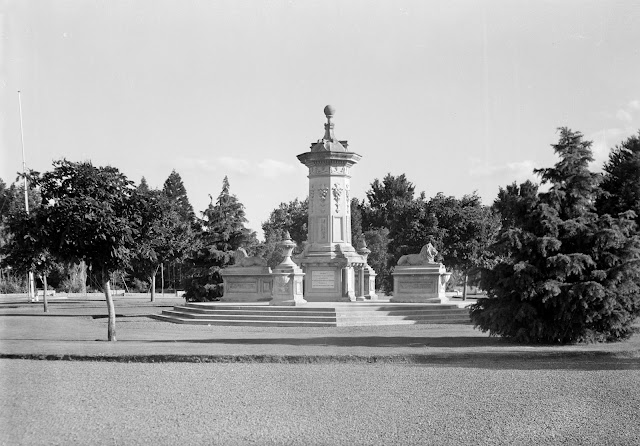





.jpeg)

.jpeg)





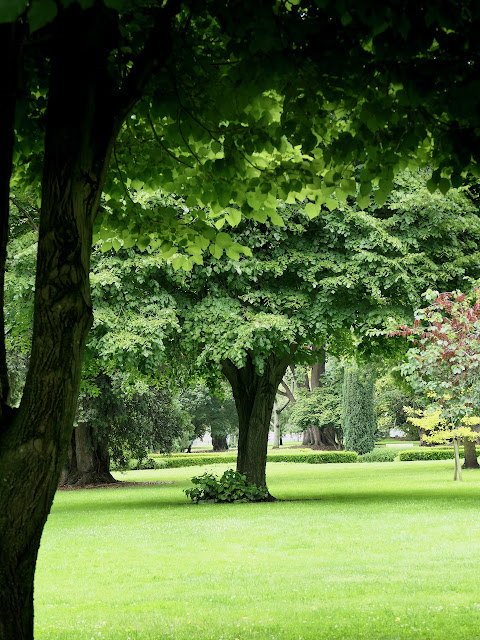








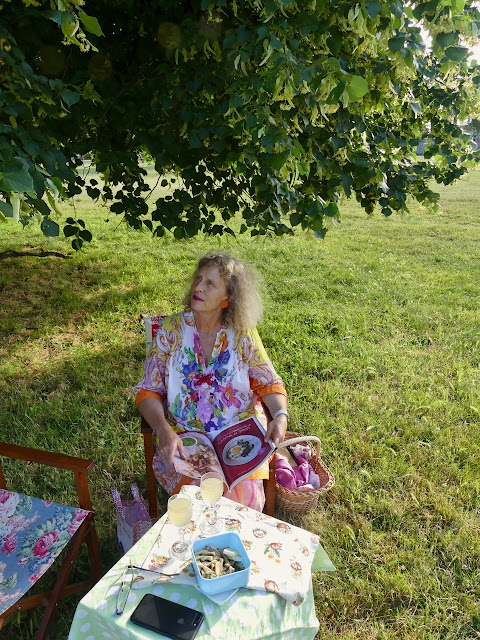





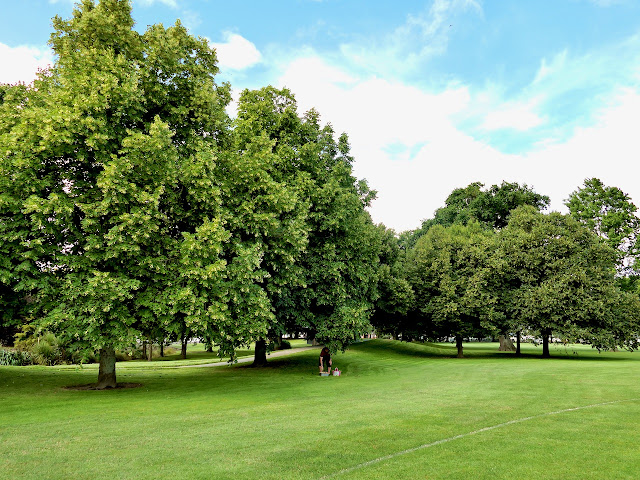

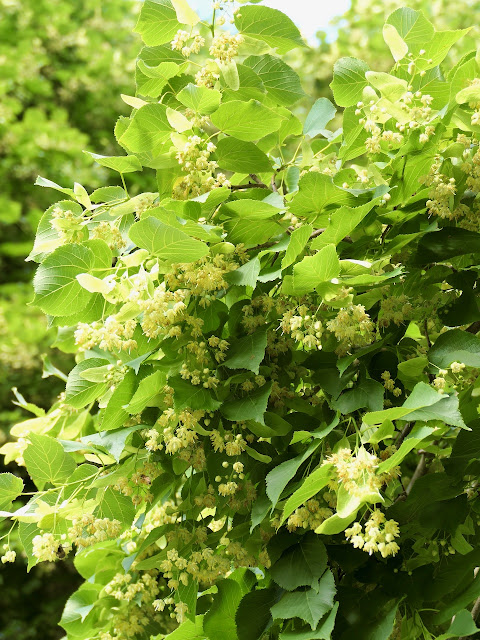



.jpeg)








.jpeg)




.jpeg)

.jpeg)


.jpeg)










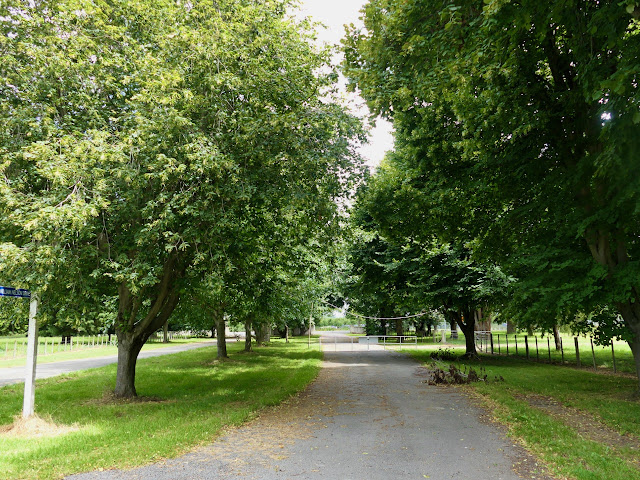










.jpg)
.jpeg)




No comments:
Post a Comment